2017 Polaris 600 Rush XCR Review + Video
The Rush XCR excels as an all-around performance trail sled
Polaris fans, if you’ve sought pure sledding nirvana but have been conflicted as to which Polaris Rush to ride, the Rush Pro-S all-arounder or the big bump tuned Rush Pro-X, your choice is now clearer and singular. The 2017 Polaris Rush XCR is THE Rush of choice for serious hardcore snowmobilers. Available with an 800cc or 600cc Polaris-engineered Cleanfire two-stroke twin, the all-new XCR picks up the mantle of the race-winningest Polaris ever, the legendary Indy XCR. Polaris leaves no doubt about the XCR as it calls it “race ready” and plans to have this model represent the Polaris brand in all major cross country and terrain competition in the upcoming season.
Get the Flash Player to see this player.
Race ready, absolutely, but extremely tuned into serious trail running, regardless of whether you are ahead or behind the trail groomer. If you follow the smooth graded route laid down by a groomer, you’ll find the XCR a superb handling unit that will corner flat and grip and go like the race-ready sled it is. If you are ahead of the groomer and the trail is rutted out from a weekend of abuse, flog the XCR hard as it is designed to fly over the deep ones, soak up the small ones and land you flat and secure like its legendary predecessor.
When the XCR was introduced to us, we either didn’t pay close enough attention or the presentation was lacking. Here’s the the thing. For the past few seasons, the Rush has been divided into two parts: Pro-S for all-around trail riding and Pro-X for serious straight line big bump absorbing. Now along comes the new XCR, which is like the Pro-S, but fitted with some Pro-X pieces and bump capabilities. That’s what we were thinking. And it’s also going to be the base model for all pro and amateur terrain racing. To meet the bulk of racer needs, it comes with the 600cc Cleanfire twin to meet the base racing regulations.
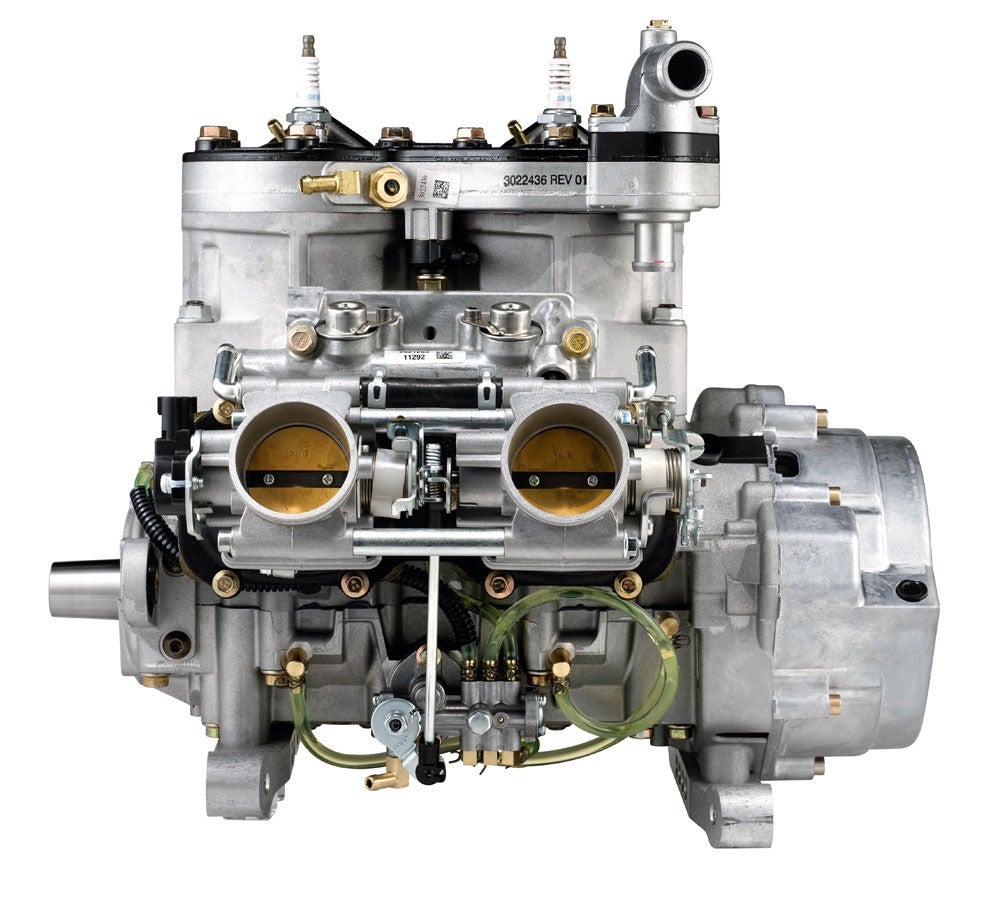
The race-proven and durable 599cc two-stroke twin features Polaris’ semi-direct Cleanfire electronic fuel injection.
That was what we understood. Presentation and on-trail reality differ as the in-the-plastic XCR far exceeds any PowerPoint introduction. In the snow, this sled is a total revelation for any level trail rider. We cannot pretend that we can or want to ride like a bang-on terrain racer who rides the ditches at full throttle, flies over driveway approaches and uses up all the 13.6-inches of rear travel in the XCR’s Pro-XC rear suspension. We know it can, not because we did, but because we watched as the lead design engineer for the XCR project did exactly that, minus the driveway approach flights.
What we did was convince ourselves that the 600 XCR would be our Polaris of choice for the upcoming season. It may be race-ready and intended to populate the amateur ranks of cross country racing, but it is a truly excellent all-around trail performer that inspires confidence as it helps make you a better rider, sometimes in spite of yourself.
Essentially Polaris re-fitted the Rush Pro-S. The 600 XCR’s under hood basics remain the same with the semi-direct electronically controlled injection system working through Polaris’ time and race-proven P85 primary drive clutch that partners with a lightweight Team Industries driven. The drive system is mounted low and centered to provide exceptional response for rider inputs in the Polaris designated rider balanced positioning.
The XCR platform offers exceptional on-trail capabilities as you can instantly affect how the sled responds to a holeshot – sit back to take weight off the skis; or a corner, slide forward to keep the Pro-Steer skis contacting the snow for maximum grip. As you work with the sled, you quickly realize that Polaris’ claim of neutral weight balance is not marketing hyperbole. The Rush XCR feels like it’s a major intuitive step ahead of the base Pro-S. If a sled can read a rider’s mind, this might be an example of sled to rider interaction.
Because the XCR will be race-bound, it adds key components necessary for racing success. The standard hydraulic brake is replaced with a new, high quality racing brake system that includes a rotor with increased surface area for extended durability. The new Type 81 brake pads can absorb more heat to reduce fading at prolonged top speeds. Polaris engineers added an external brake scoop on the brake side of the cowl to create additional cooling. Considering how well Polaris stylists have managed the Polaris look, this may be an affront as it looks more like a last minute add-on a race mechanic would make in the pits of a major event than a planned and executed styling cue. But, hey, it works.
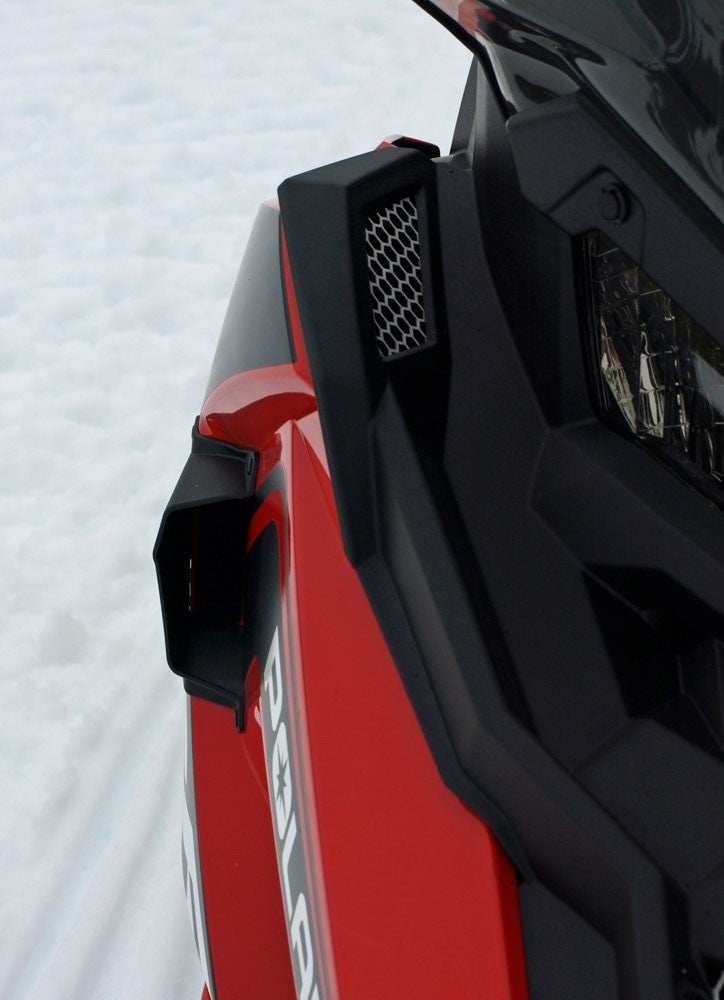
Functional and effective, the XCR’s side-mounted brake scoop directs cool air to the high performance racing brake.
What also works are the pieces borrowed from the Rush Pro-X and fitted to the new XCR. To accommodate riders standing and banging through deep moguls or really rough northern Minnesota ditches, you’ll find the Pro-X Riser bar and hooked-style IQR handlebar added to this race-ready runner. While the XCR reflects the lower ride height of the Pro-S, the XCR team chose to go with the Pro-X torsion bar that allows more flexible ride control in the rough.
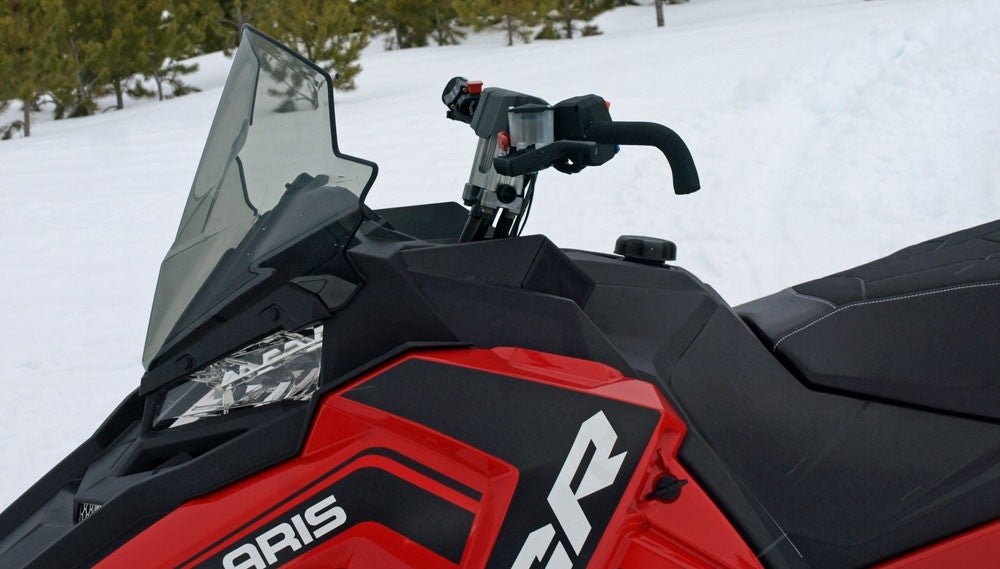
The XCR borrows a handlebar and riser set from the Pro-X to assist riders when blasting through deep moguls.
At first glance, minus the bold XCR graphics, the 600 XCR appears to be standard issue Pro-S. There’s the short height windscreen, the AXYS Performance seat with its narrow front to enhance ride control in the turns, and the familiar look of the double A-arm front suspension and Pro-XC rear unit.
While familiar in appearance, the suspensions are greatly enhanced with the best of the best Walker Evans premium shocks, including a new Walker Evans 2.0 front track shock that was developed specifically with Polaris engineering. As the complement to the easy-access external rear shock, the front track shock mounts near the suspension’s limiter strap and is now larger in diameter to hold an increased volume of oil for improved shock control under race conditions. Both the front and rear suspensions feature Walker Evans piggyback reservoir needle shocks that now include high and low compression adjustability.
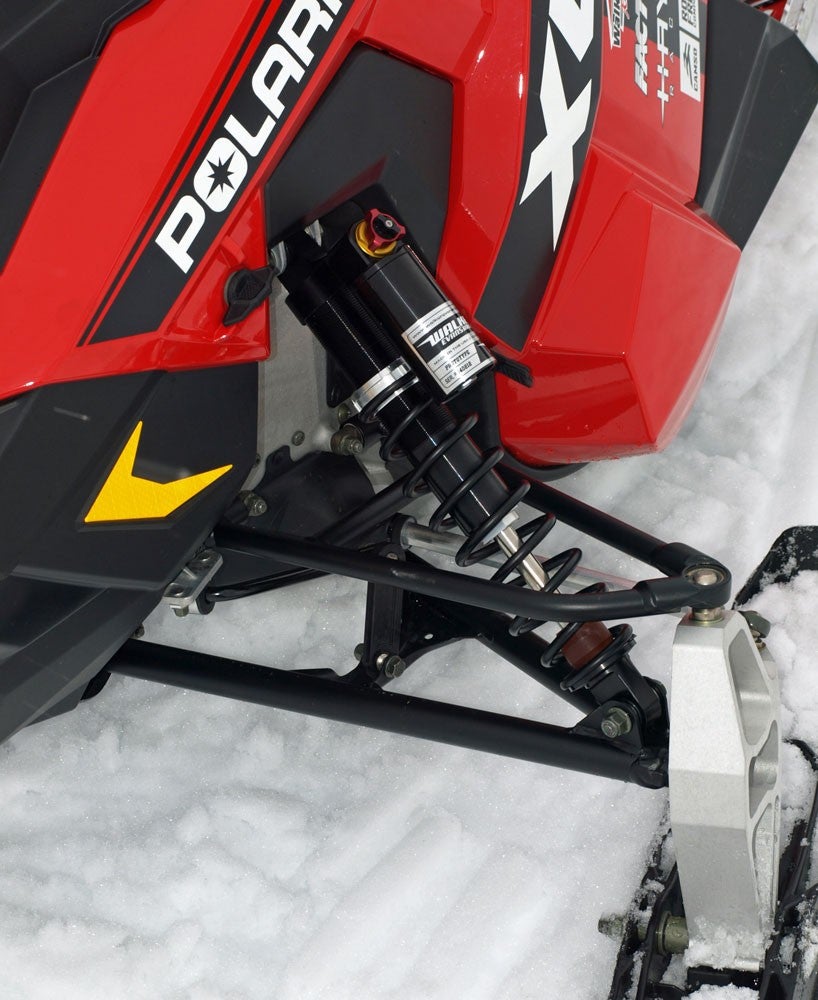
Polaris engineers specified Walker Evans shocks with high/low compression adjustability for the AXYS front and rear suspensions.
Admittedly we no longer ride as hard as we once did in our long-ago racing days, but we still appreciate the merits of a race-ready sled and can watch in awe as today’s younger and more accomplished riders demonstrate the bump and handling capabilities of sleds like the Rush XCR. The new-for-2017 Polaris 600 XCR would be our choice for flatland running, not because we’d race it or pound it full throttle in the ditches, but because it is an extremely well-rounded trail sled.
The bits and pieces added to make up the XCR suitable for racing, also make it an excellent sled for serious all-day trail riding. Of course, if your idea of serious trail riding is 20-30 miles per hour, it might not be a great fit. But if you are an above average rider who puts on a few thousand miles a season and favors handling and the occasional banging over yet-to-be-groomed trails, the 600 XCR may be an ideal fit.
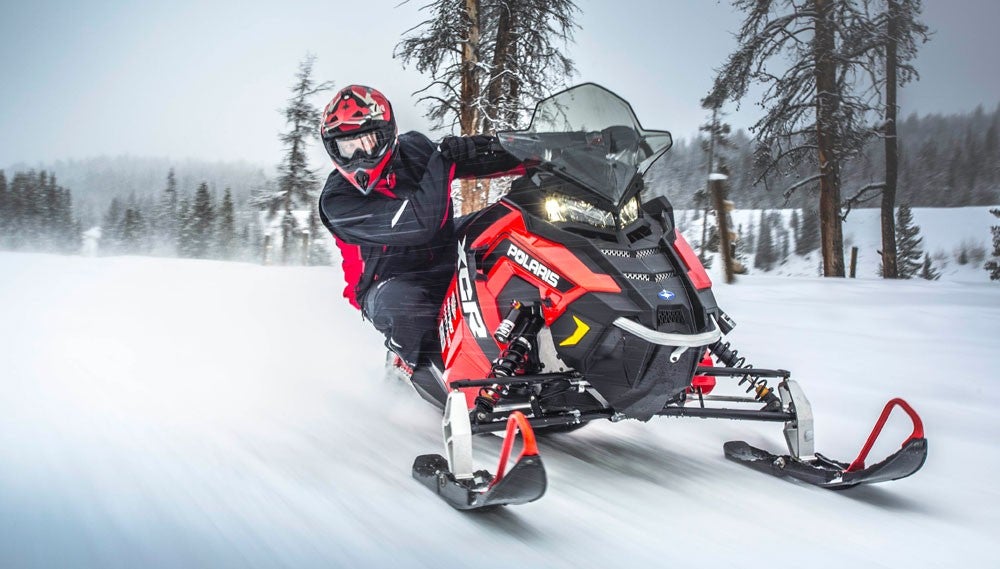
In our test riding the race-ready XCR exhibited intuitive rider to sled interaction when heading into corners.
Ergonomically the XCR is hard to fault. It simply oozes rider-friendliness with its seating position, the way the handlebar fits your posture, how the left hand control cluster sits and the readily read-able color interactive digital display.
Even if we weren’t pushing this sled to the limits like a racer, we liked the precision feedback we got on the trail with this sled. The on-trail feedback is exceptional and there’s the knowledge that no matter how you ride or what your specific personal preferences may be, you can tune the sled’s ride and overall handling to perfection. Would the 600 XCR be wasted on us? We think not. At closer to sea level elevation we gain about 20 percent more performance from the Cleanfire 600 versus West Yellowstone’s 6,600 feet of elevation. That means, for us, anyway, the 600 XCR is just about perfect. It may be race-ready, but it is most assuredly trail performance ready with lots of accessory options to custom fit our needs.
2017 Polaris 600 Rush XCR
| Engine | Polaris Liberty 599cc twin cylinder 2-stroke; liquid-cooled; Polaris Cleanfire electronic fuel injection; two-into-one exhaust; CD ignition |
| Horsepower | 115+ (estimate) |
| Drive | Polaris P85 drive with Team LWT driven clutch |
| Front Suspension | AXYS dual A-arm with Walker Evans Hi-Lo speed compression adjustable piggyback competition-type shocks; 9.3-inches of travel; Pro Steer skis |
| Rear Suspension | Pro-XC parallel rail slide suspension with external Walker Evans Hi-Lo speed compression adjustable piggyback competition-type shock on rear; 13.6-inches of travel |
| Length | 114.0 in |
| Width | 47.0 in |
| Height | 46.0 in |
| Ski Stance | 42.5 |
| Track | 15 x 121 x 1.352 Cobra |
| Weight | 449 (claimed) |
| Brake | Polaris AXYS radial race-type disc system |
| Features | STANDARD: Pro-Steer skis; electronic reverse; AXYS performance seat; one-piece IQR hooked handlebar; multifunction gauge/display OPTION: electric start, storage; security system |
| Fuel Capacity | 12.0 US Gal |
| MSRP | US$11,999/C$13,699 (Spring Only Purchase) |



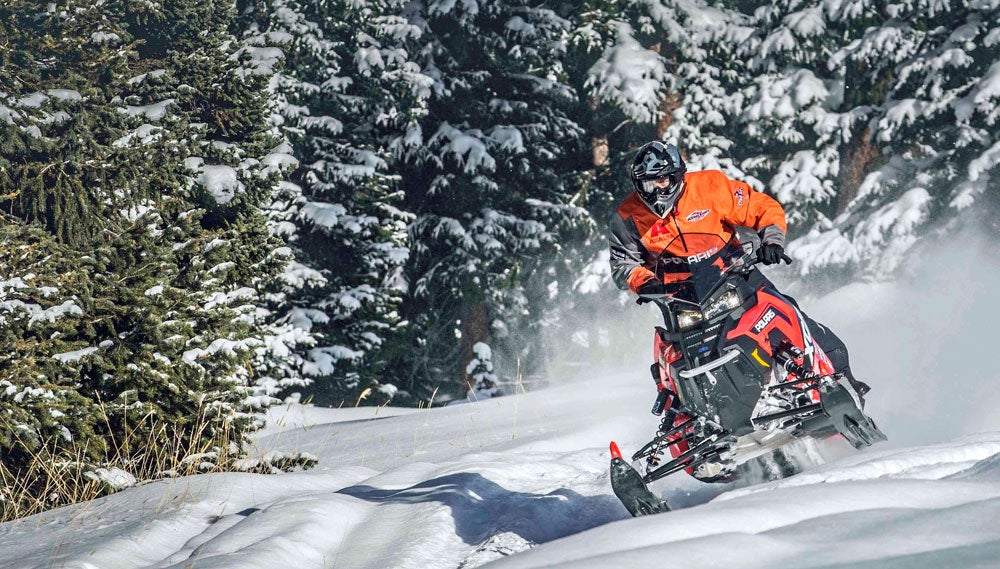
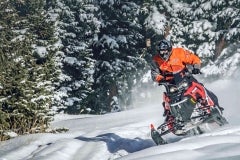
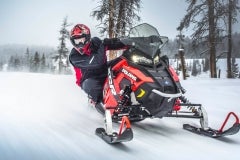
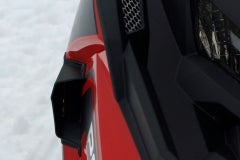
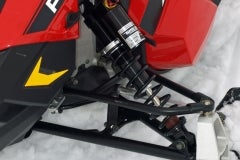
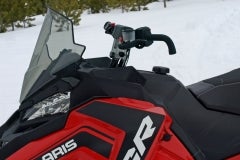
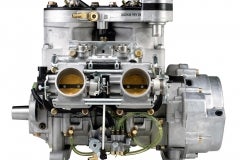
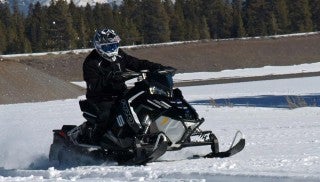

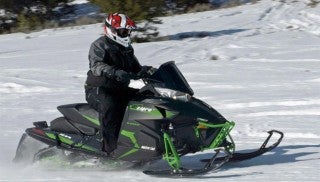


 Your Privacy Choices
Your Privacy Choices